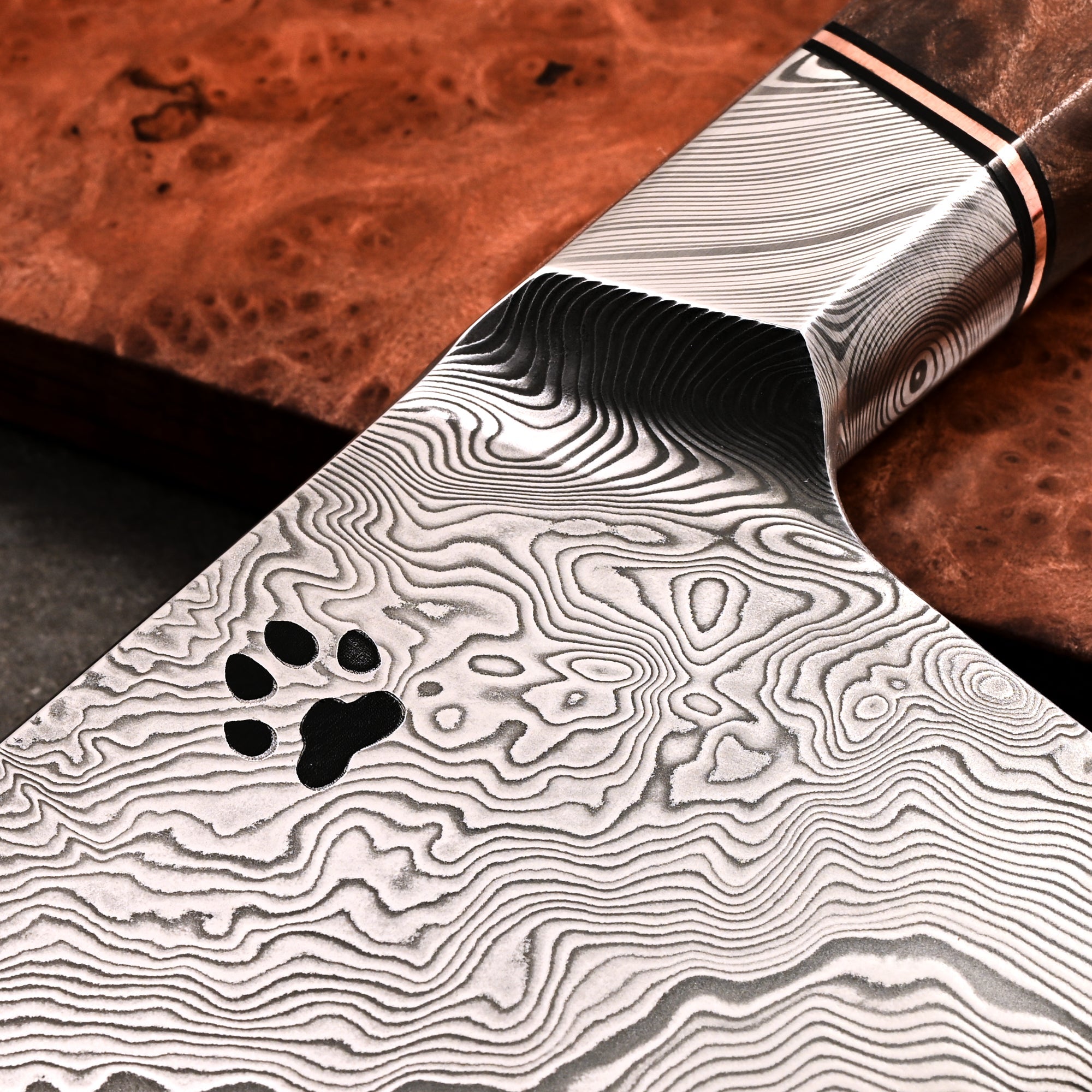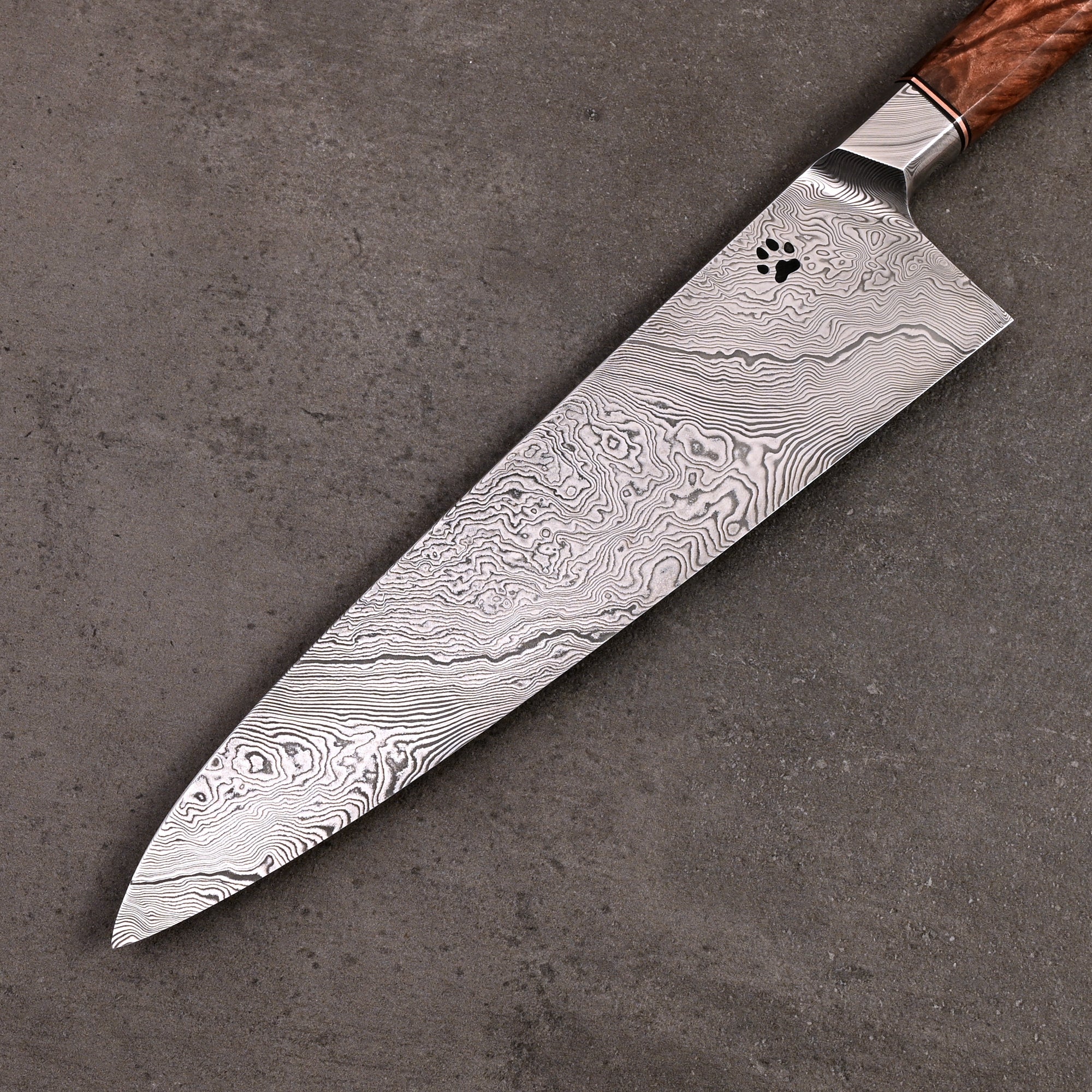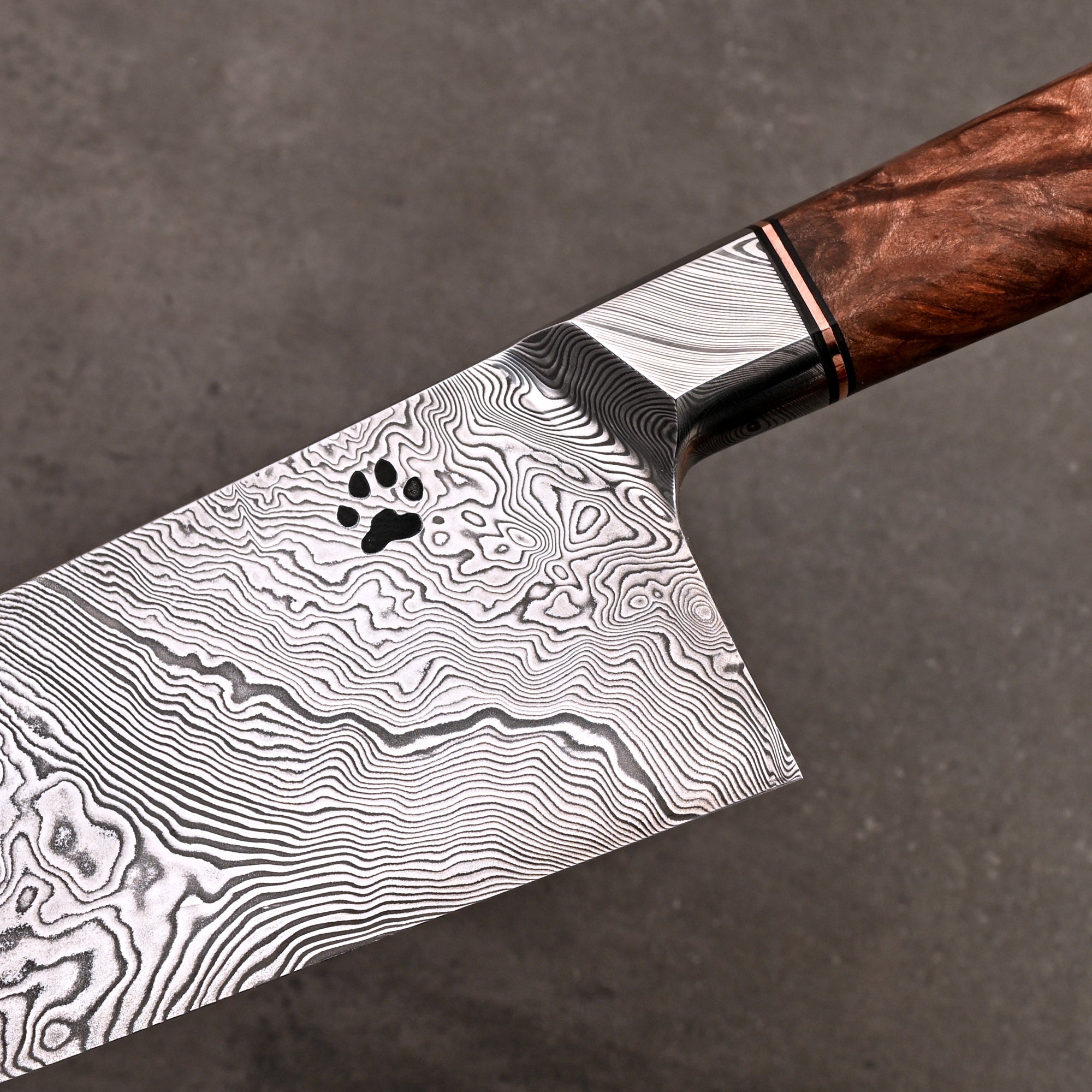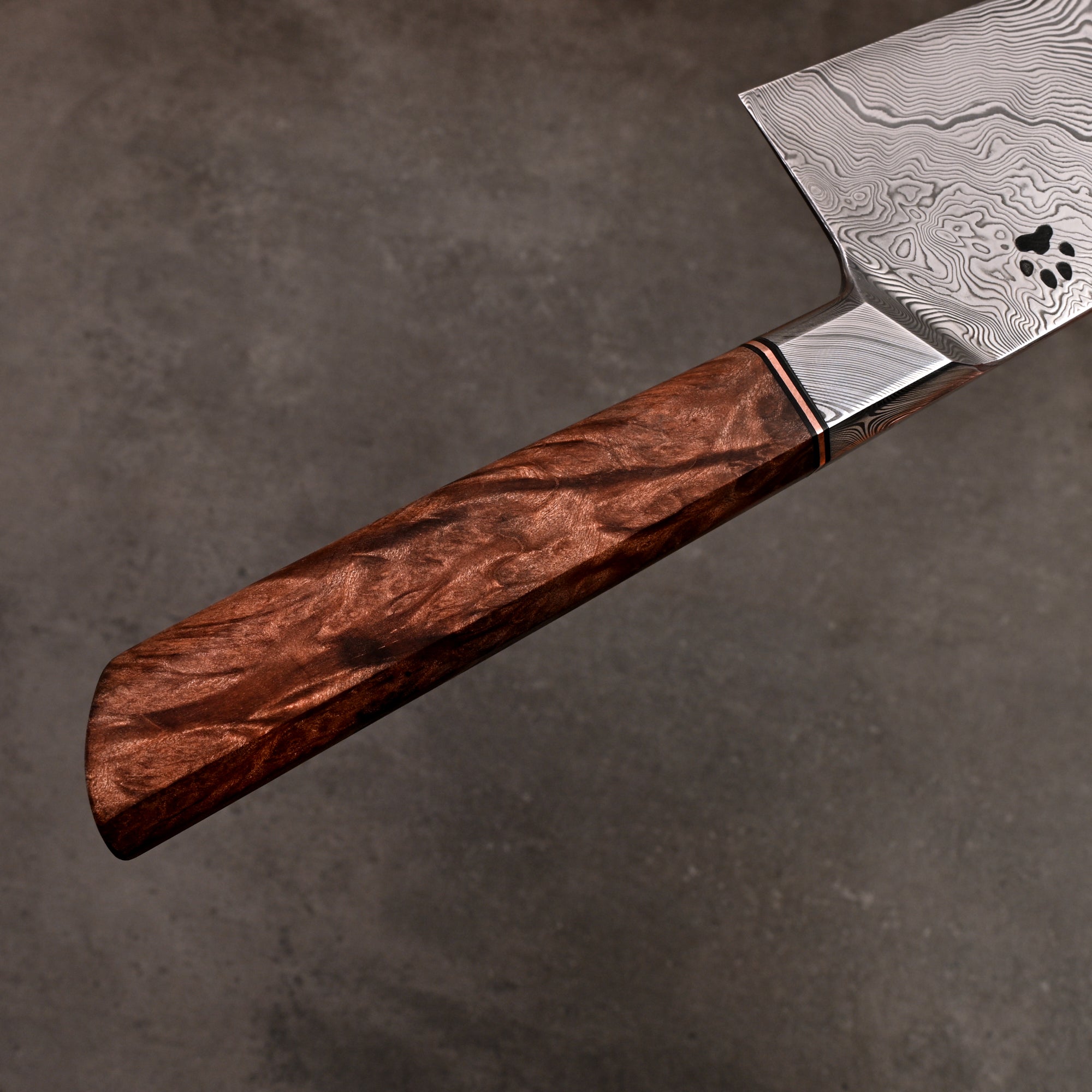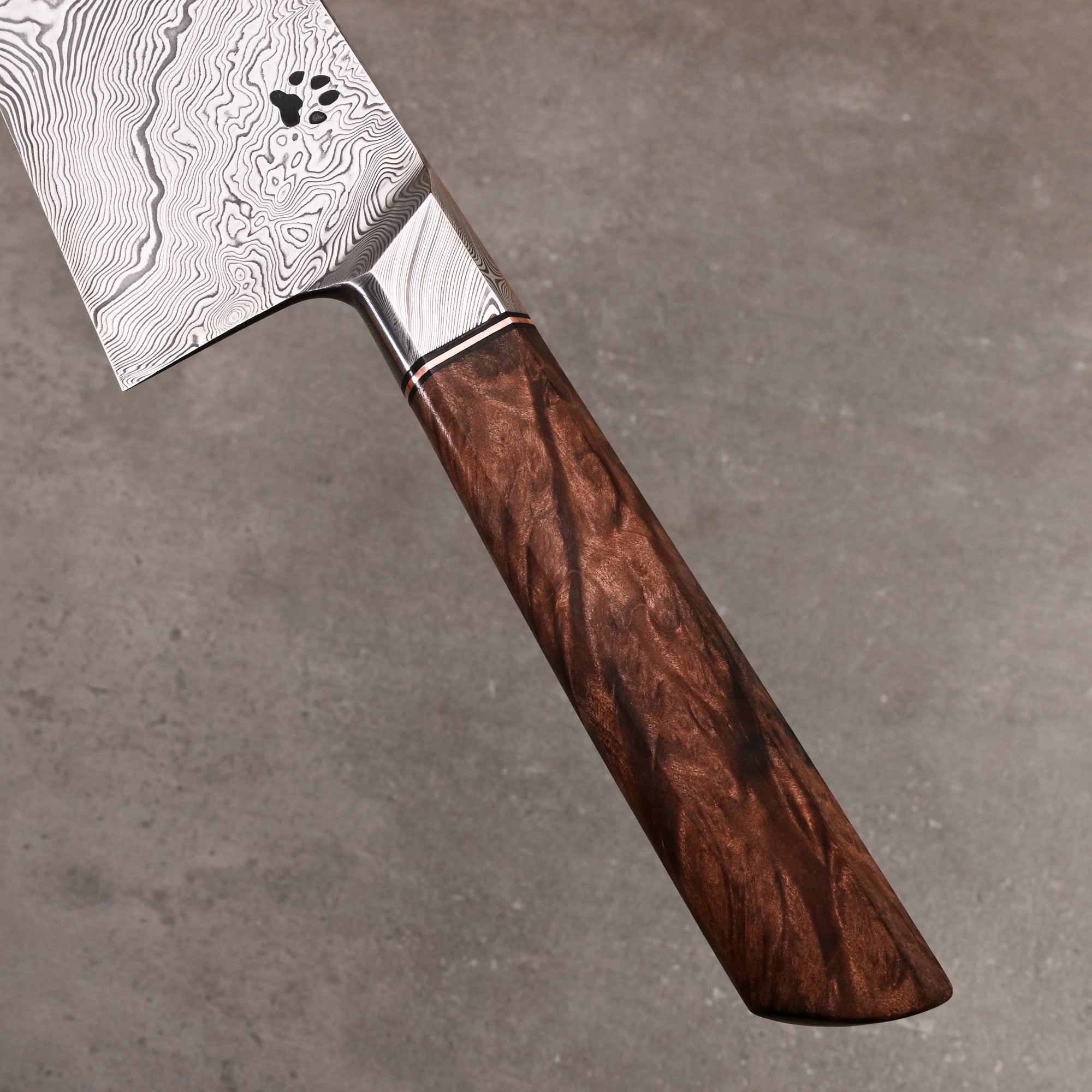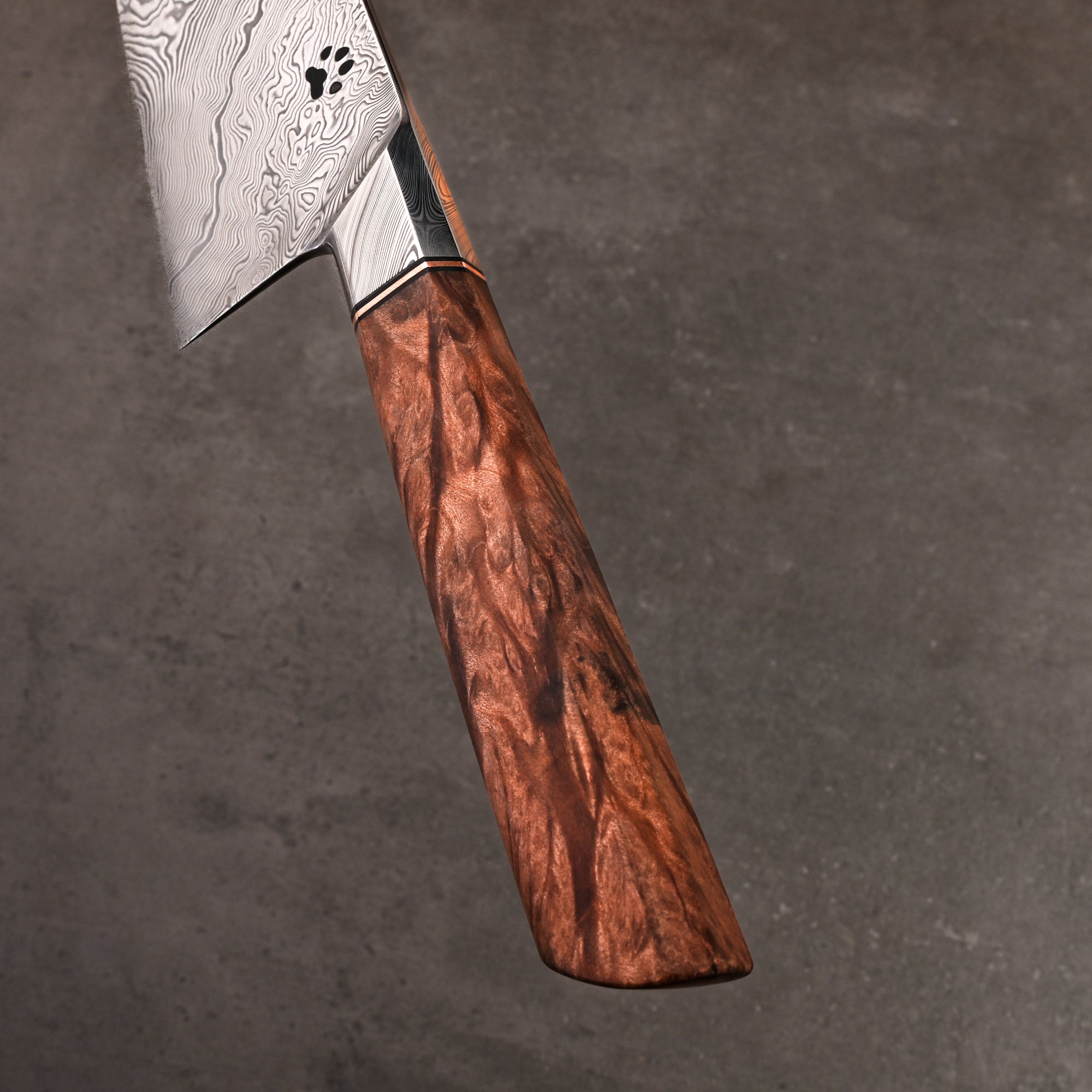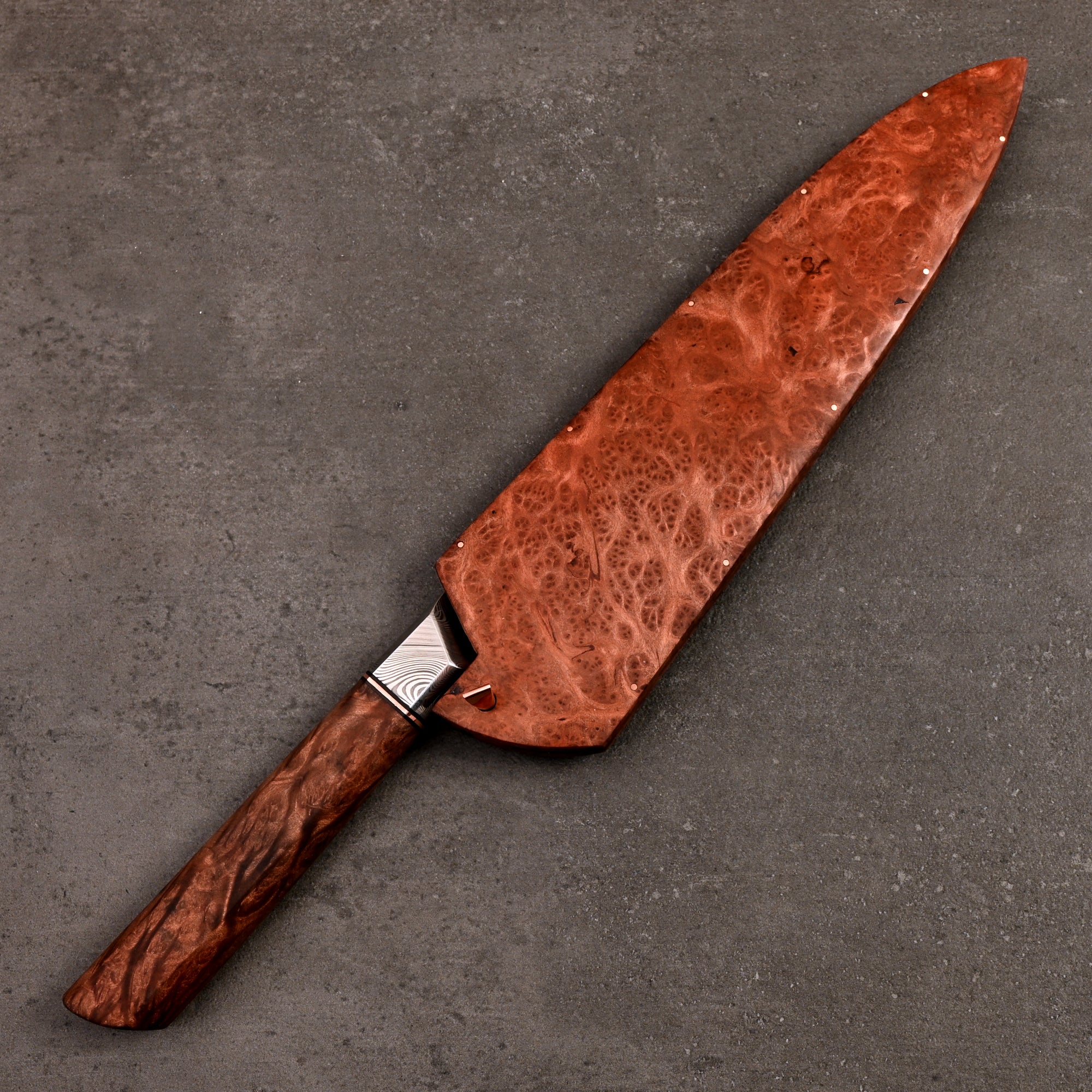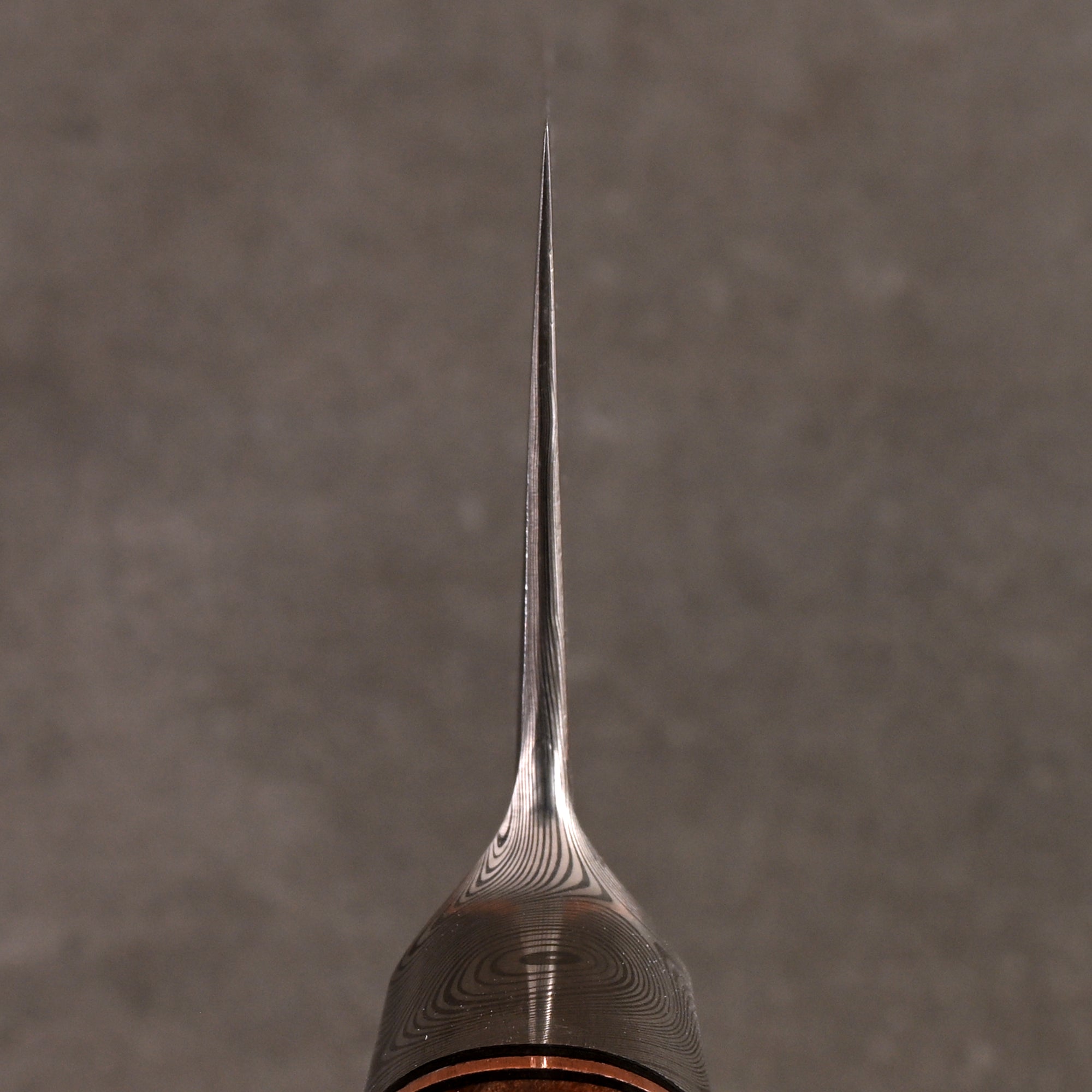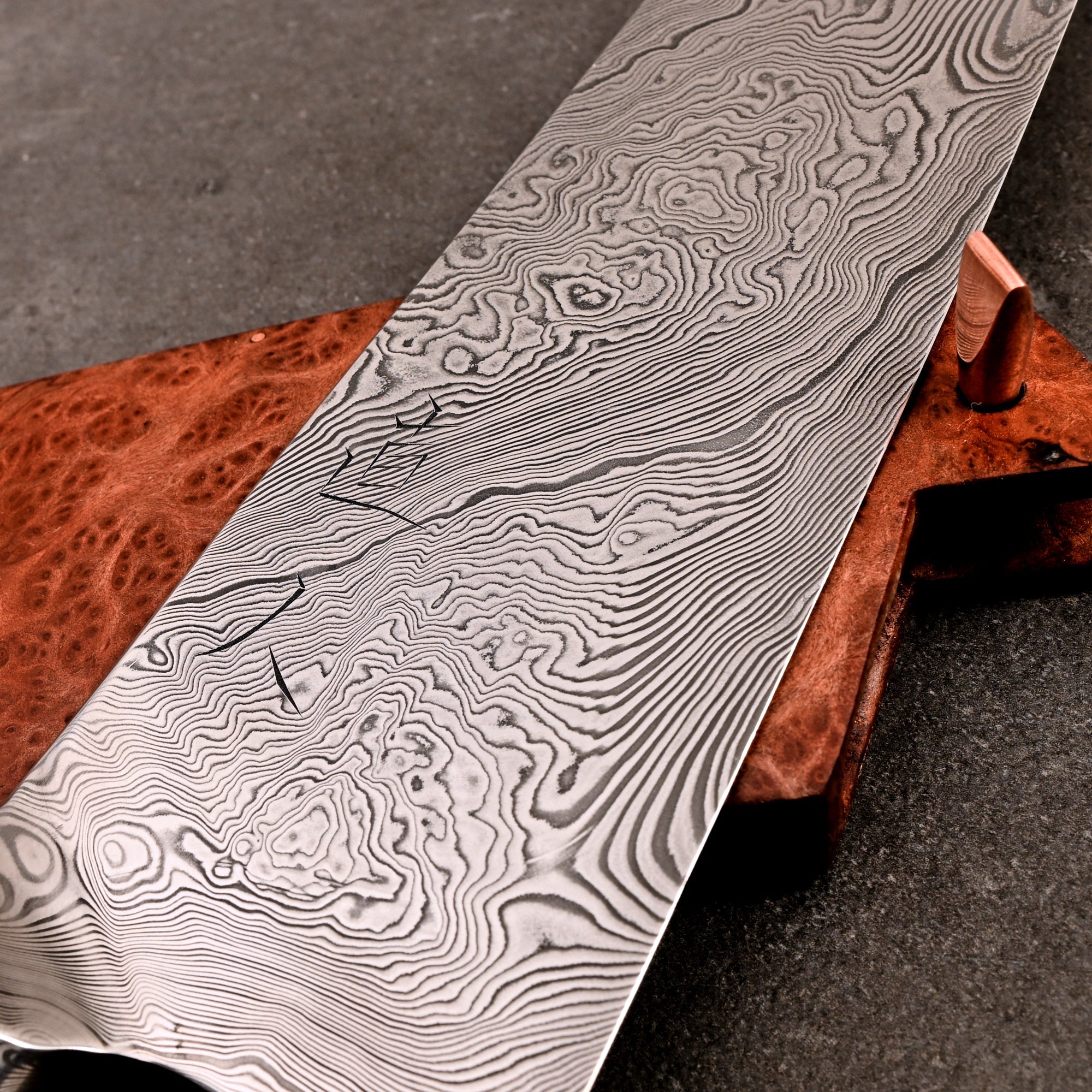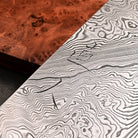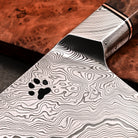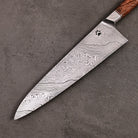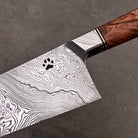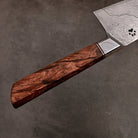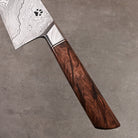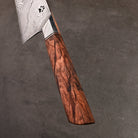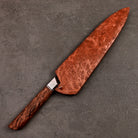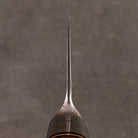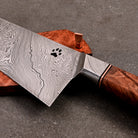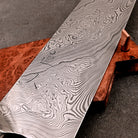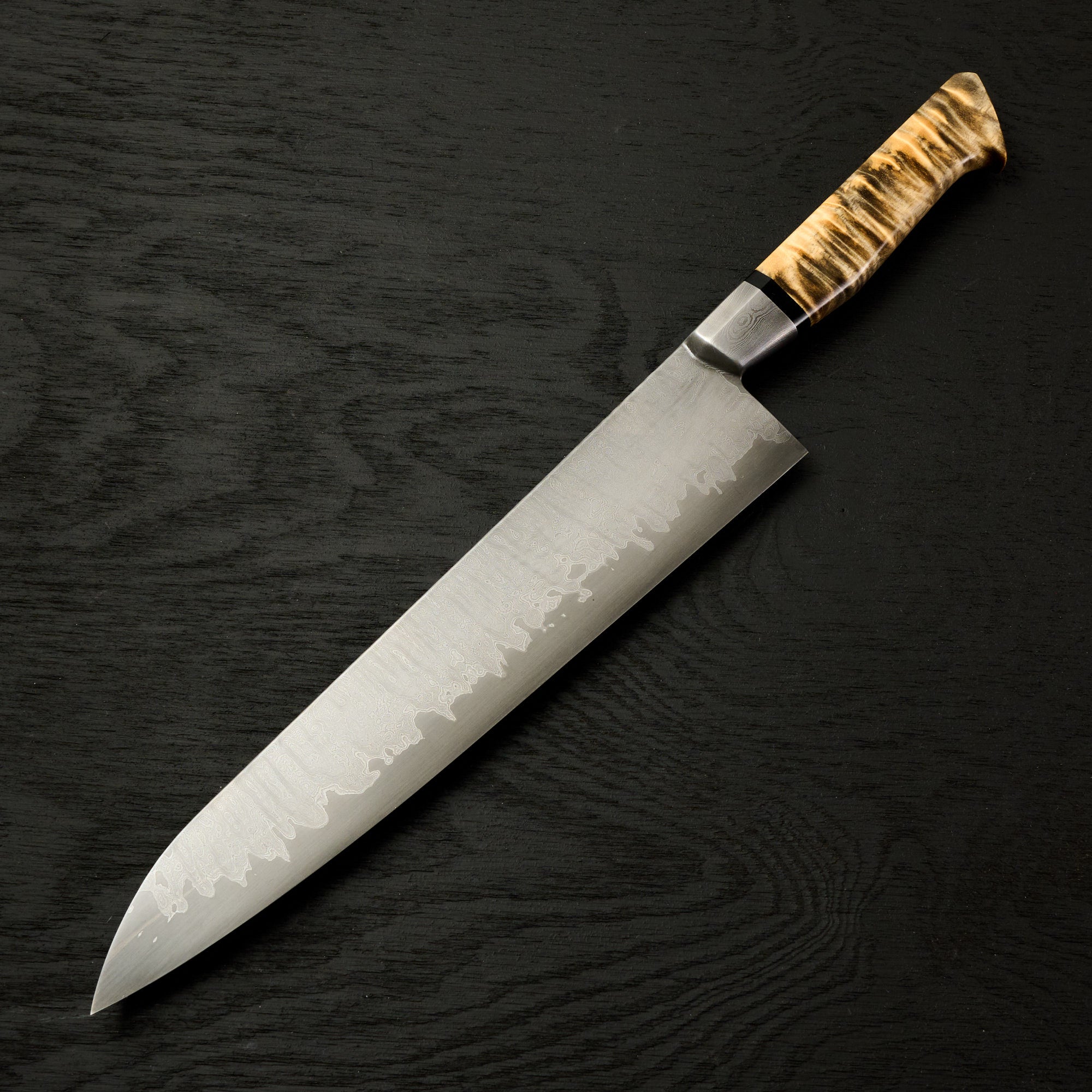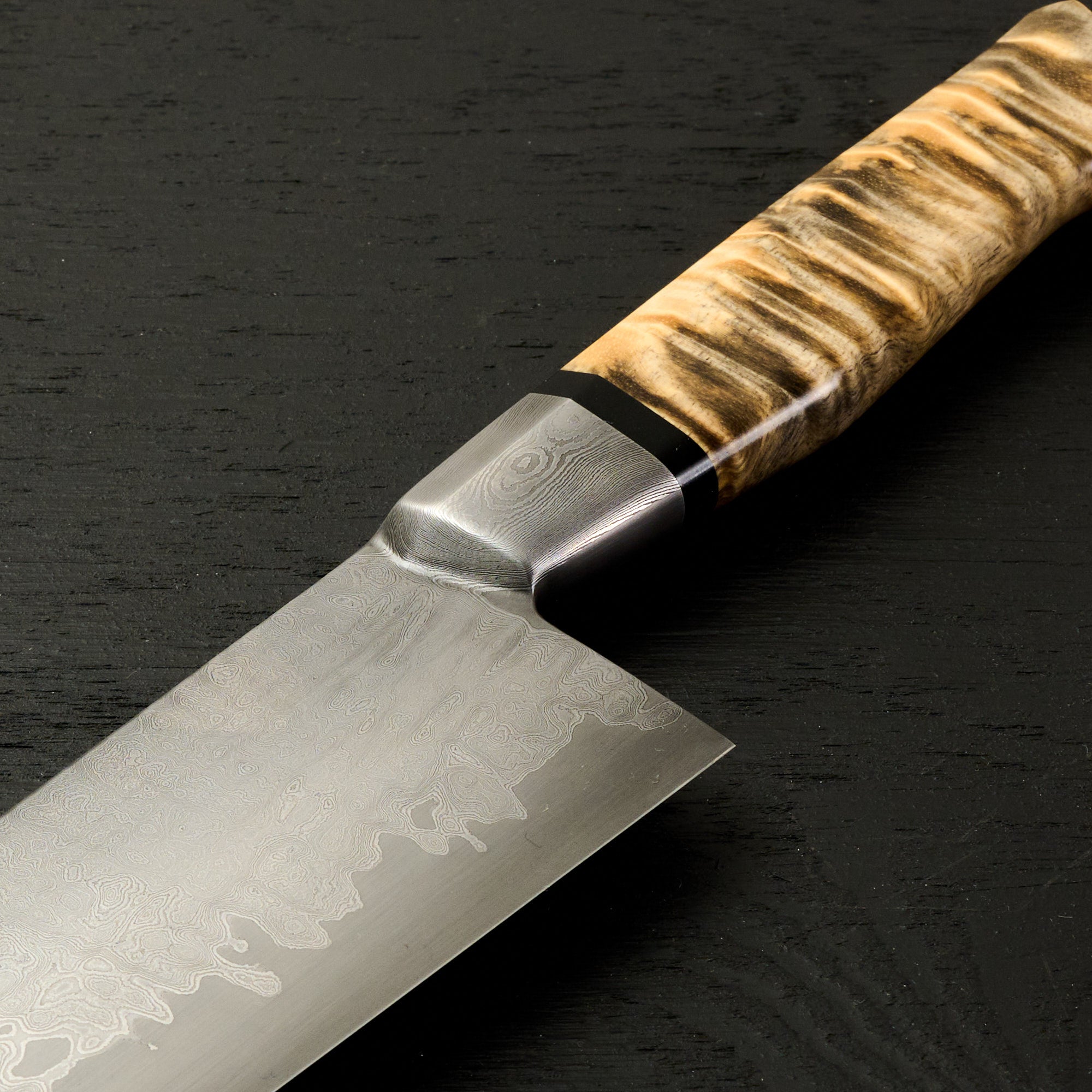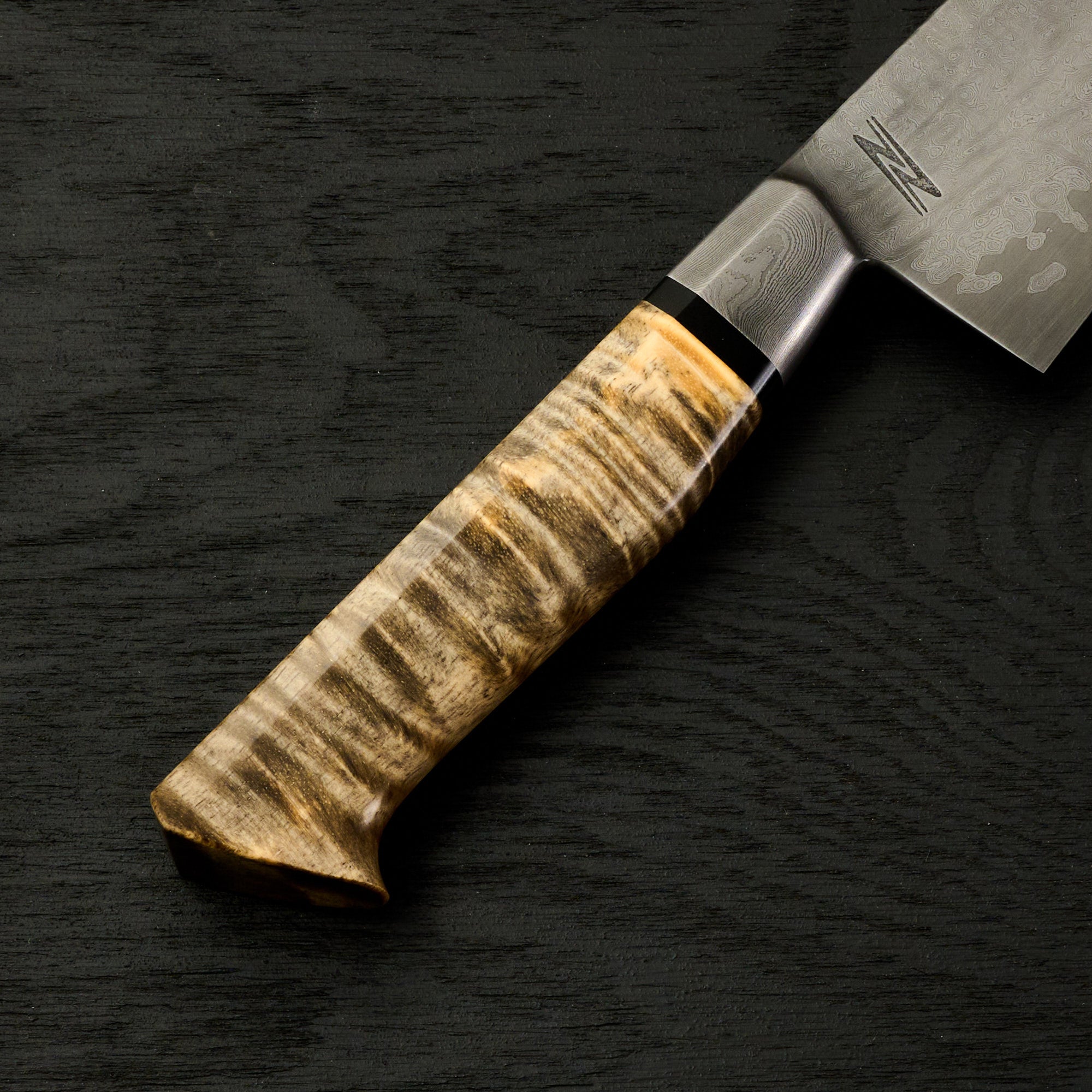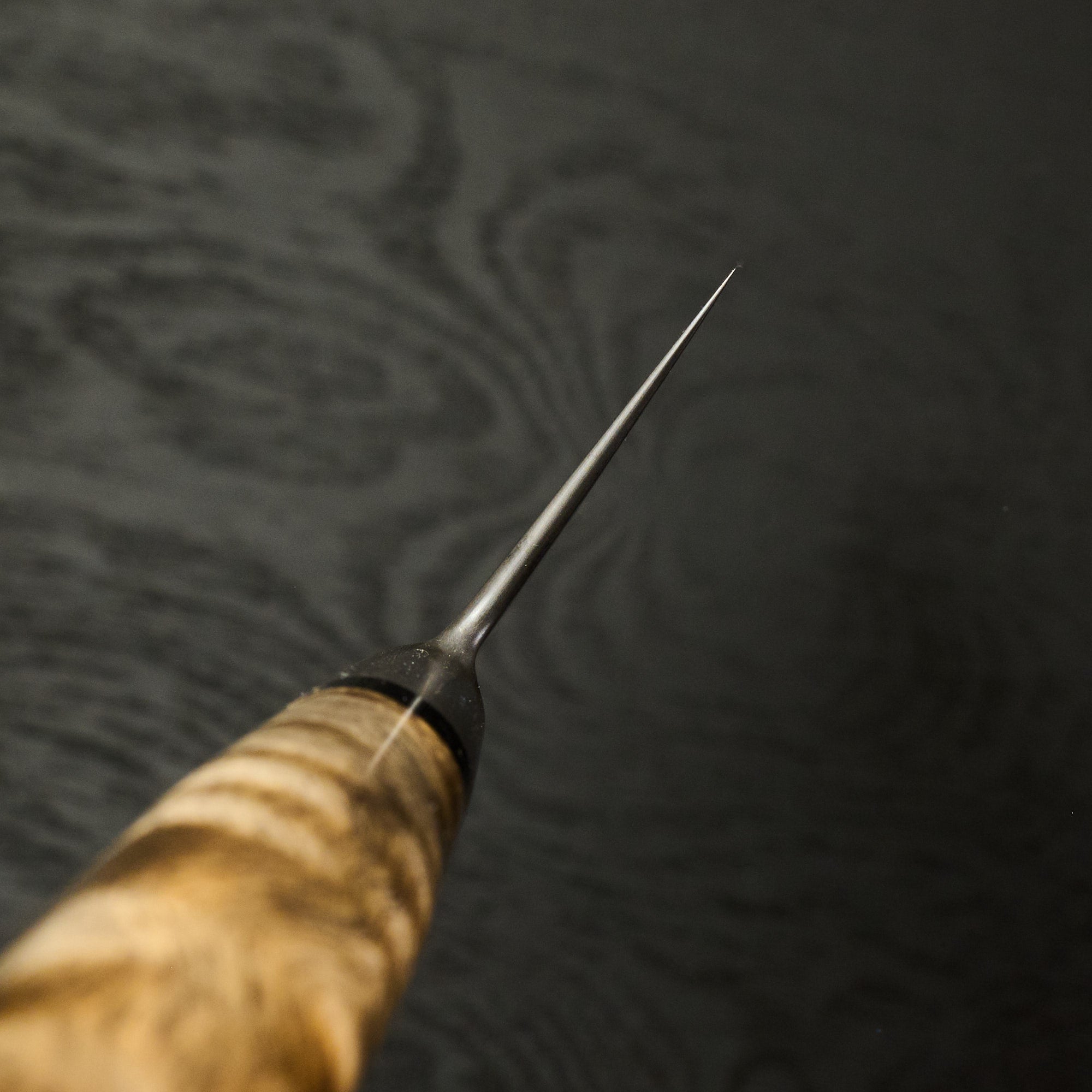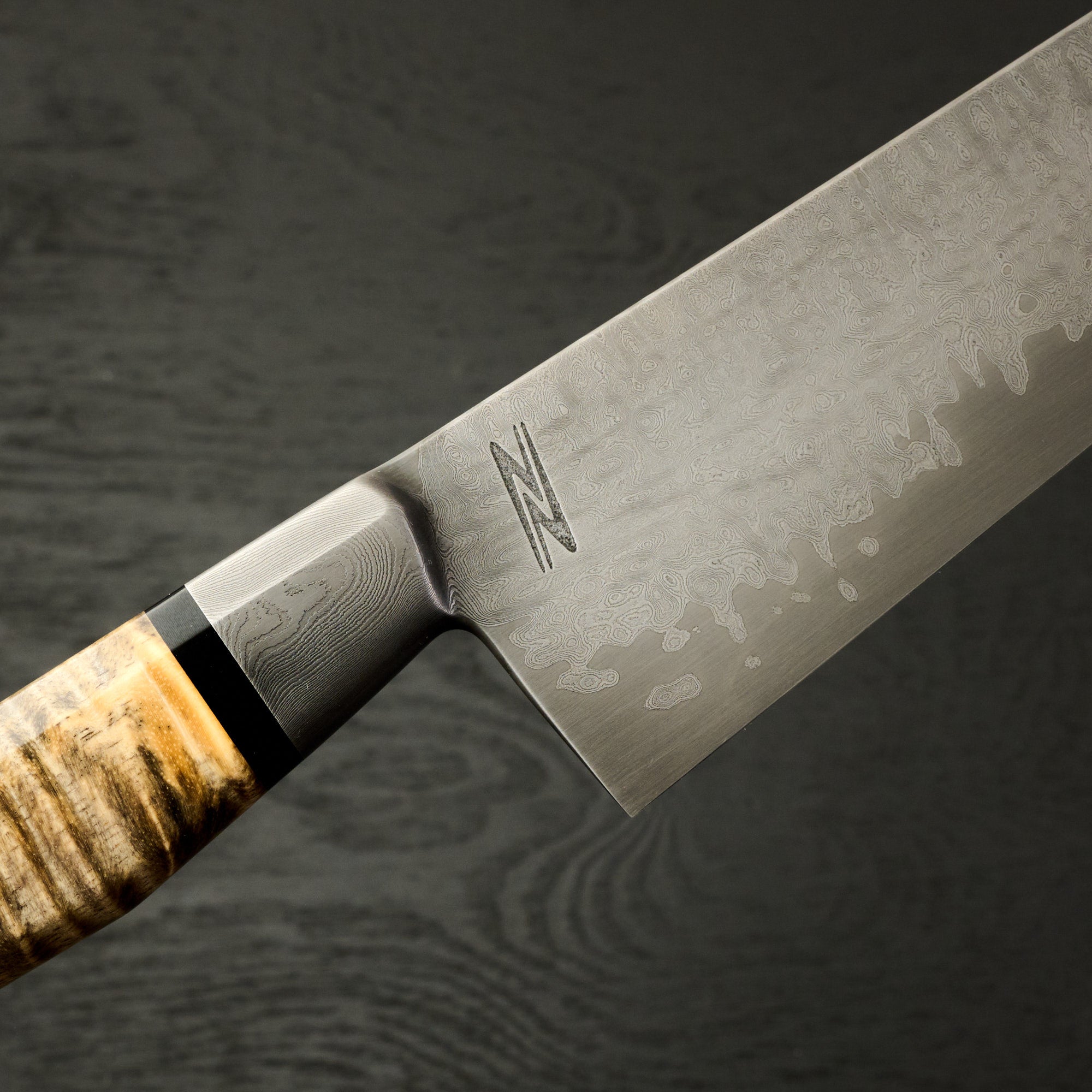Isasmedjan X Naohito Myojin Gyuto 235mm Integral Damasteel
A first in many ways. This Gyuto 235mm is the only kitchen knife, to our knowledge, to be forged and ground by a Euro/Japanese artisanal collaboration. It may also be the first Damasteel Gyuto to be worked on by a Japanese artisan. Finally, it's a very rare forged integral ground in Japan. For these reasons it’s an extremely unique piece.
The blade was originally forged in Sweden by Jonas Johnsson and was then shipped to Japan and ground by the skilful knife sharpener Naohito Myojin. Finished in Sweden by Jonas who completed the handle and saya. The knife has since exhibited in the Damasteel chef invitational and was photographed by renowned photographer Jim Cooper.
The knife is forged in Damasteel DS93x Dense twist stainless steel, it features a very thin convex bevel and gently tapered geometry. The knife is not only beautiful, but it will perform seriously well.
Accented with Redwood lace burl, copper and black G10. The handle is shaped in Jonas's classic Rokkaku Hanmaru style with copper and G10 elements set between the stunning burl handle and incredible forged bolster. The blade is beautifully polished and features a lovely deep etch, giving the stainless Damascus a beautiful topographical texture to it.
Redwood lace burl used for the Saya and handle features a striking figure full red and brown hues and the Saya is fastened with copper pins. Overall, this is a high point for us as it represents the first of what we hope will be many unique collaborative pieces between our incumbent “Collectors Selection” artisans and new talent from Japan. It’s an honour to be able to bring you this exceptional work from two of the world’s finest artisans.
Producing pieces like this represents a unique set of challenges, but the results are equally exceptional and beautiful. A special thank you to both Naohito Myojin and Jonas Johnsson for making this possible and trusting us to represent them.
Produktspezifikation
Klingentyp: Gyuto
Kantenlänge: 235mm
Spine Heel: 3,6 mm
Wirbelsäule Mitte: 2,25 mm
Wirbelsäulenspitze (vorher 20 mm): 1,36 mm
Klingenhöhe: 56,97 mm
Gewicht: 228 g
Spitzenstahl: Damsteel
Edelstahl: Ja
HRC: 64
Klingenkonstruktion: Mono-Stahl
Klingenausführung: Säuregeätzt (Zwangspatina) und Satinpolitur
Schleifen: Konvex
Handle-Konstruktion: Versteckter Zapfen, Integral
Griffmaterialien: Redwood Lace Burl, Kupfer, G10
Händigkeit: Beidhändig
Saya enthalten: Ja
Produktpflege:
Reinigung : Von Hand mit warmem Wasser reinigen. Vermeiden Sie nach Möglichkeit, den Griff zu benetzen.
Schärfen : Wir empfehlen die Verwendung von Wetzsteinen zum Schärfen Ihrer Messer und eines Honstabs oder -stahls, um den Grat zwischen den Schleifsitzungen zu erhalten.
Reaktive Stähle : Reaktive Stähle wie Aogami Super, Apex Ultra oder einer der vielen hochwertigen deutschen und schwedischen Reaktivstähle sind anfällig für Rost, wenn sie nicht richtig gepflegt werden. In diesem Fall empfehlen wir, das Messer zwischen den Einsätzen trocken zu halten und bei längerer Aufbewahrung des Messers die Messerklinge mit Tsubaki-Öl oder einem anderen lebensmittelechten Öl abzuwischen. Dies verhindert zwar nicht die Bildung von Patina auf der Klinge, aber es verhindert Rost. Eine Patina kann ein schönes persönliches Merkmal Ihres Messers sein und hilft, die Rostbildung zu stoppen. Trocknen Sie Ihr Messer also zwischen den Einsätzen regelmäßig ab, lagern Sie es trocken und tragen Sie bei längerer Lagerung von Zeit zu Zeit etwas Tsubaki-Öl auf.
Ein Nachschlagewerk für Stahlsorten
Griffpflege : Wenn Sie ein Messer mit einem nicht stabilisierten Holzgriff haben, können Sie von Zeit zu Zeit Tsubaki-Öl oder ein anderes lebensmittelechtes Öl auf den Griff auftragen. Lebensmittelechtes Wachs kann sowohl auf stabilisierte als auch auf nicht stabilisierte Holzgriffe aufgetragen werden. Tragen Sie niemals heißes Wachs oder Öl auf, da Sie sonst den Griff verziehen oder beschädigen könnten.
Auktionsregeln:
- Alle Gebote sind endgültig
- Versand und Mehrwertsteuer (nur EU) werden dem Gewinnergebot hinzugerechnet.
- In einigen Fällen kann bei der Auktion eine Reserve erhoben werden. Wird der Mindestbetrag nicht erreicht, kann die Auktion ohne Gewinner beendet werden. In diesem Fall kann ein Kaufpreis mit dem Meistbietenden ausgehandelt werden.
- Mindestpreise können angegeben werden oder nicht.



